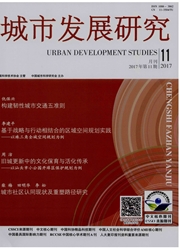

 中文摘要:
中文摘要:
京津冀地区是全国能源消耗强度最大、大气污染最严重的区域,是全国钢铁、火电、水泥等重工业集中发展区。考虑到京津冀严峻的大气环境形势和区域间大气污染物跨界传输的现状,开展京津冀大气污染协同治理需要明确大气污染排放的空间集聚特征。基于京津冀2013年企业污染源环境统计数据,应用核密度空间分析工具模拟了京津冀工业源大气污染排放空间集聚特征。研究结果显示:(1)京津冀钢铁冶炼行业、电力热力行业、非金属制品业以及基础化工是京津冀主要大气污染排放行业;(2)工业源大气污染排放主要集中在唐山、天津、邯郸和石家庄,合计占到整个区域SO2和NOx排放的60%和64%;(3)京津冀区域SO2和NOx排放密度高于5 t/km2的区域分别占整个区域面积的19.3%和19.1%,在唐山、石家庄、邯郸、天津、保定、廊坊等形成集中的大气污染集聚区。针对上述重点污染行业和污染排放密集区域,应开展区域协同综合治理,通过区域间排污权交易、绿色金融、产业结构优化升级等措施,提升区域大气环境质量。
 英文摘要:
英文摘要:
Beijing-Tianjin-Hebei region,where steel,power,cement and other heavy industries clustered,has the largest energy intensity and most serious air pollution national wide. In consideration of the status quo of poor atmospheric environment and interregional transboundary transmissions of air pollutant,it is necessary to clear the spatial aggregation of air pollutant emission in the cooperative air environmental control in Beijing-Tianjin-Hebei region. On the basis of the environmental statistics from the enterprise level in Beijing-Tianjin-Hebei region in 2013,a kernel density estimation tool has been conducted to investigate the spatial aggregation characteristic of sectoral air pollution in Beijing-Tianjin-Hebei region. Results has shown that: 1) Steel,power and heat,non-metal mineral products and chemical industry are the main air pollution sectors in Beijing-Tianjin-Hebei region. 2) Sectoral air pollution mainly concentrated in Tangshan,Tianjin,Handan and Shijiazhuang,where the SO2 and NOx emissions occupied nearly 60% and40% of the regional emissions,respectively. 3) Tangshan,Shijiazhuang,Handan,Tianjin,Baoding,Langfang are the main air pollution cluster,where the SO2 and NOxemission density above 5 t/km-2. It is suggested that regional cooperative comprehensive governance should be conducted in the air pollution cluster to improve the regional air quality in Beijing-Tianjin-Hebei region,by air pollutant emission trading,green finance,and the optimization and upgrading of key industries.
 同期刊论文项目
同期刊论文项目
 同项目期刊论文
同项目期刊论文
 期刊信息
期刊信息
